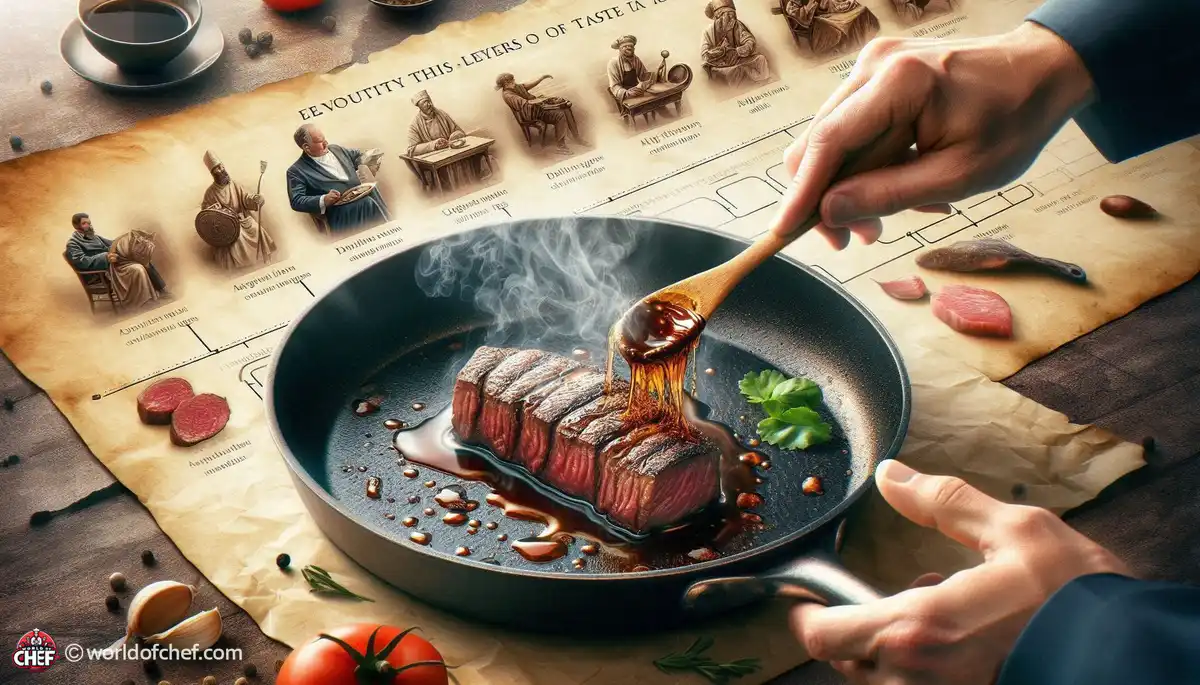
Simmering with Spices: Infusing Flavor into Your Dishes
Emery Donley - Oct 8, 2024 - 8 min read


Deglazing is one of the oldest techniques used by chefs. It is one of the most basic techniques in culinary arts, and it has been used for centuries. It is used to enhance flavors and combine them to create complex sauces. Historically, it was born out of the need to make use of every ingredient and to maximize flavor from the dishes they prepared.
Deglazing is the very old-fashioned process of throwing some wine or vinegar into a browned bottom, thereby loosening all those beguiling brown bits - meat or vegetable caramelizations at the bottom - and dissolving them into sauce or gravy or braise. This method was passed on from generation to generation where it would evolve with culinary practices and ingredients.
In time, deglazing recipes expanded to a wide scope of ingredients and techniques. Although wine and broth represented the main ingredients used to deglaze pans, chefs began experimenting with different liquids, such as fruit juices, spirits, even beer, to deglaze pans and add distinctive flavors to their dishes. The aromatic ingredients like herbs, spices, and aromatics were also added to increase the depth and complexity of the deglazed sauces.
As culinary traditions traversed continents, so too did the practice of deglazing. From an Italian chef's use of wine in tomato-based sauces to Asian cuisines, which used soy sauce and rice wine in deglazing, the method found new dimensions in kitchens all over the world. The method was given a myriad of twists by each culture, thus giving rise to a variety of deglazed dishes that reflected the versatility and adaptability of the technique.
The heart of deglazing is the Maillard reaction, a chemical reaction amongst proteins and sugars at their melting point. This makes the browning of food and the complex taste compounds that contribute to the flavour when deglazed sauces are served. Hence by deglazing a pan with its liquid, it can release and dissolve all these flavour compounds in it to create an extremely rich, aromatic, full-bodied sauce.
Along with developing flavor, deglazing also has a role to play in the consistency and texture of the sauce. When liquid is added to the pan and mixed into the fond, it emulsifies fats and thicken the sauce, thus making it feel velvety smooth to the palate. This does not only add to the mouthfeel of the sauce but also helps flavors bind together, creating harmony and balance in the dish.
Temperature control is one of the major requirements for a successful deglazing. The pan must be deglazed over medium to high heat, so that the liquid evaporates fast and the flavors of the fond get concentrated. However, utmost care must be taken that the liquid does not boil or reduce too quickly as it may result in bitter or burnt taste. Balancing heat and timing, chefs can get the best results and unlock what deglazing can really do.
Finally, but not last, comes the function of acidic flavouring bodies like wine, vinegar, or citrus juice, which add a balance to richness and also enhance the flavor, brightening the overall profile of the dish. It is only when mixed with the caramelized sugars and savory flavours that the acidity really brings the sauce alive.
Currently, deglazing is still at the heart of both commercial and home kitchens. New innovations in cooking and meal preparation have inspired new dimensions to the art of deglazing in different aspects, such as the incorporation of new ingredients and modern techniques that can give rise to potent and creative flavors. Current molecular gastronomy to fusion cuisine are but some of the many creative ways and innovative forms of re-inventing and re-defining the art of deglazing.
Apart from the appeal for palates, deglazing also serves the principles of contemporary sustainability and waste reduction. Because the chef uses all that last flavor bit in the pan, he is reducing waste while maximizing the use of ingredients. Such an approach to cooking focuses less on environmental impact but at the same time suggests resourcefulness and creativity in the kitchen.
As global cuisine continues to mix and expand, deglazing fills a gap in the convergence of culinary traditions, mixing ingredients and techniques from one end of the world to the other. Chefs can combine flavors and ingredients taken from various cultures into the dishes they deglaze, thus leading to flavors and a sense of food culture. It could range from a French-inspired coq au vin to the Latin-infused adobo sauce, deglazing providing endless avenues for expression and exploration.
While deglazing is one of the fundamental techniques in fine dining, it also goes well in home cooking and everyday food. Using just a few basic ingredients and some practice in the kitchen, home cooks can raise their dishes to restaurant standards, impressing family and friends with luscious sauces and succulent meats. This adds a bit of sophistication to the dish, whether it is a Sunday roast you are deglazing that pan for or just a midweek stir-fry when the complexity is worth it.

Emery Donley - Oct 8, 2024 - 8 min read

Russell Comeaux - Oct 8, 2024 - 8 min read

Walter Backus - Oct 7, 2024 - 8 min read

Samantha Thames - Oct 7, 2024 - 6 min read